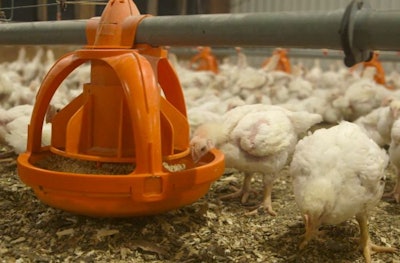
When poultry growers are between flocks, practicing good litter management is important to setting up the success of the next flock, Amy Syester, ChemTrade Logistics, said.
Syester, who also is a Delaware poultry and grain farmer, gave advice on good litter management while speaking at the Midwest Poultry Federation Convention, which is being held virtually on August 12-13.
Be timely
Do not wait too long after the last flock leaves the barn to manage the litter, Syester recommends.
“You’ve got to make sure that whatever you do to your litter, you do it within 48 hours of the birds leaving your farm,” Syester said. You need to figure out what you’re going to do, and have your plan in place before your live haul crew really calls you. You need to get the wheels in motion.”
Don’t disturb hard pan layer
When working the existing litter between flocks, it is a good idea to get rid of cakes and chunks that are holding moisture. However, Syester advises to only condition the “top couple inches of your surface area.” Do not disturb the hard lower layer, also known as the “hard pan” layer. Doing so could increase the amount of ammonia present in the house.
Pay attention to corners and sidewalls
When preparing the litter for your next flock, be sure to pay attention to the barn’s corners and sidewalls, and make sure those areas are clean.
“Along those sidewalls, you get a lot of sweating at the foundation. Moisture is there,” she explained.
Because chicks will go to the sidewalls to cool off, it is important that those areas are as free of ammonia as possible to keep from challenging the chicks.
Do not pulverize litter
Pulverized litter may look nice, Syester said, but it is not recommended. Pulverizing never really removes any moisture and, in reality, it creates “more surface area of actual crust.” Instead of the pulverized litter being just on the top layer, it will also be in lower levels. More ammonia will therefore be generated when the barn is heated. Also, she said, litter amendments will be less effective.
Make sure floors are level
You really need to make sure that your floors are level, Syester said, because having level floors means your feeders and water lines won’t be uneven.
“Having level floors will help you have level equipment so that every bird has an equal opportunity to get food and water,” she said.
Syester suggests that the litter be leveled 3-4 days prior to litter amendment application. If you don’t do that, you run the risk of prematurely using your amendment before you actually need it.
















